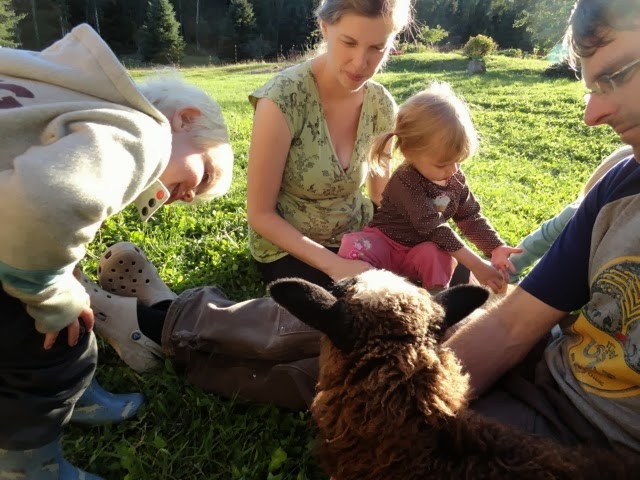Following are some snap shots of the season in progress.
Right around the time of the sap run there was a video of a new axe going viral on social media. The idea was that this new axe, with its off centre counter-weight, split wood by striking it on a tangent thus forcing the wood fiber to split easier and with less effort. Sound like a bunch of smoke? I think so too. In the video the guy had his straight-grained, seasoned, beech (I think) wood, placed in a tire on a block and he showed the effectiveness of the axe. I would argue that the tire is the main factor contributing to splitting success. I had been using the tire for a few months and it is awesome, highly recommended. Use whatever axe you already have!
I spent a fair bit of time at the start of this season getting the lines just the way I've wanted. With valves placed at intervals along the line we're able to hook into the line and pump sap up and into it from the portable sap tank hauler. The hauler starts the season on skis and later is fitted with wheels. The system works really well.
Spring was very late this year and we had a huge dump of snow just as we were about to tap. The crew ended up using snowshoes for most of the season which we've never done before.
Here's the aforementioned sap tank hauler. I use it at the start of the season to move buckets out to the trees. It's an awesome little sled if I do say so myself.
We celebrated Ella's birthday at the sugarbush this year. She requested a blue ladybug cake and Beth pulled through amazingly well.
Getting the fire going at the start of the season. Here I've got the steam hood lifted above the evaporator for inspection.
Full steam ahead.
This year I hired people other than my friends. As we all get older and have kids our free time is whittled away. Luckily, I found a good crew by posting online and with a couple posters up at the university. Alex, Kyle, Phil and Jocelyn were a great crew this season. My dad, Dave Sr., came up again this year and he was simply amazing. At 67 years, he's still moving really well and is a super competent guy. He helped with sap collection every day and stayed out at the camp by himself or with me. It was so great to have home here and we got a lot done together.
Our new system of sap processing includes reverse osmosis and so we've got three tanks on the go now. From left to right there's the raw sap tank, water tank (filled by the RO), and the concentrated sap tank. The system works so well and makes the boiling time about half of what it used to be.
Washing buckets is a rather tedious job following the season. In the past we've struggled to get it done but this year we kept the workers on until it was complete. What a relief.






























